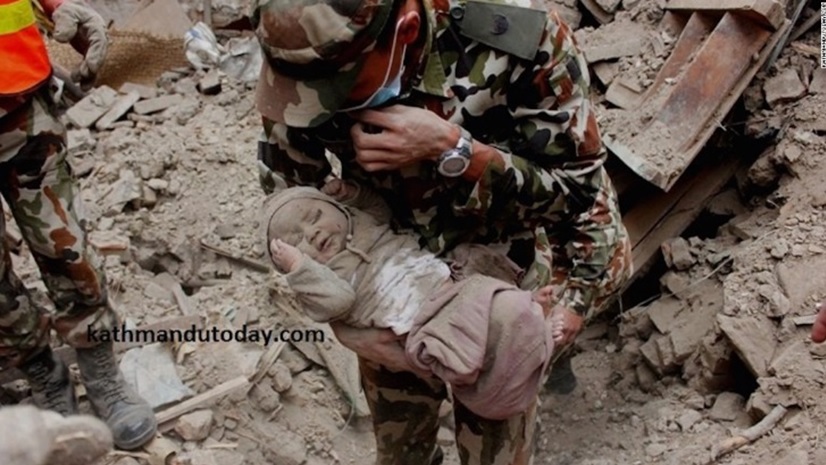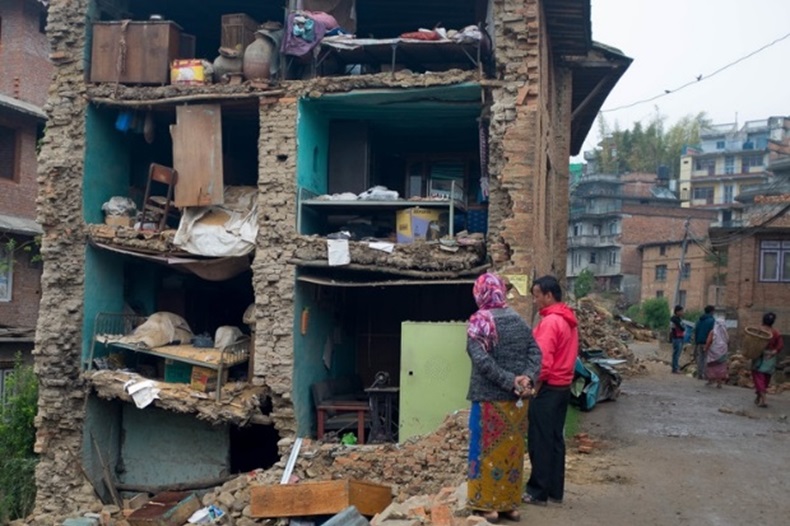
 |
HKJCDPRI E-NEWSLETTER (ISSUE 2) |
Nepal Earthquake From disaster and humanitarian experts to even the Nepalese locals, they will tell you that the recent 7.8-magnitude earthquake (and 7.4-magnitude aftershock) were never surprises. In fact, Nepal's Minister of Foreign Affairs raised his concern over the impact of a major earthquake as recently as March at World Conference on Disaster Risk Reduction (more coverage in the next session) in Japan. "It is estimated that the human loss in the Kathmandu Valley alone should there be a major seismic event will be catastrophic” he said. Two years ago, international humanitarian media organization IRIN1 published an article “Imagining a major quake in Kathmandu”2 , of which experts were asked to model the damage should a strong earthquake occur in a weekday morning. “It is the nightmare scenario aid workers and government officials have long feared” – echoed right at the start the article ironically described how “certain” people knew an earthquake could strike the city in any second. Then, experts started to utter the question “Why wasn't Nepal better prepared?” There have been countless discussions previously. Geologically, Nepal is located in a natural seismic fault. Scientists have warned that an earthquake of a magnitude greater than 8 can occur around every 80 years. The very risky nature is compounded by the unplanned and poorly regulated urbanization in the densely populated capital – Kathmandu, which grows in size by around 6.5 percent a year without much thought on earthquake-resistant building methods. Even though the National Building Code was adopted in 1994, older structures were left out, while new ones fail to comply due to poverty and a lack of government capacity to enforce the law. Therefore, the knowledge and expertise are there to reduce casualties and consequences. But the question remains, were they better prepared? With the death toll now above 8,600 and rising, the warning was prescient. Yet, many experts said the outcome would have been worse but for efforts already prepared to reduce the disaster risks in Nepal and help limiting loss of life in the quake. More lives could have been saved should the progress of building the earthquake resilience accelerate. There are many reasons behind the comparatively slow protection development, and resources are better served elsewhere. In a poor country like Nepal, disaster protection may provide lesser or more uncertain returns than other investments in medication, clean water or basic daily necessities. The inconvenient truth remains as people are facing other causes of death such as malaria or diarrhea daily instead of disasters, which may seem easier and cheaper to prevent. While we understand that Hong Kong has comparatively limited risks of earthquake or other natural hazards, the globalized nature of human-induced hazards such as climate change and extremism greatly increases the related risks. Risk increase is inevitable, but preparation is always key to minimize loss. The question remains - how prepared do you think you are? |

Amul Thapa/Kathmandu Today/Associated Press 
Juliette Rousselot/IRIN |
WHAT DO WE CONCERN |
|
|
|
|
1 http://newirin.irinnews.org/ |
OUR PARTNERS 合作伙伴 |
|
|
|
|
誠邀參與! |
FUNDED BY 捐助機構 |
JOIN US “Be Part of this Architecture for Humanitarian Crisis and Disaster Management” |
CONTACTS Hong Kong Jockey Club Disaster Preparedness and Response Institute Address: Room 901, Hong Kong Academy of Medicine Jockey Club Building, 99 Wong Chuk Hang Road, Aberdeen, Hong Kong Telephone:2871 8507 Fax : 2296 4628 Email:[email protected] |
If you wish to be removed from our mailing list, please send email to [email protected]
MEMBERS OF THE EDITORIAL COMMITTEE Chair Members |